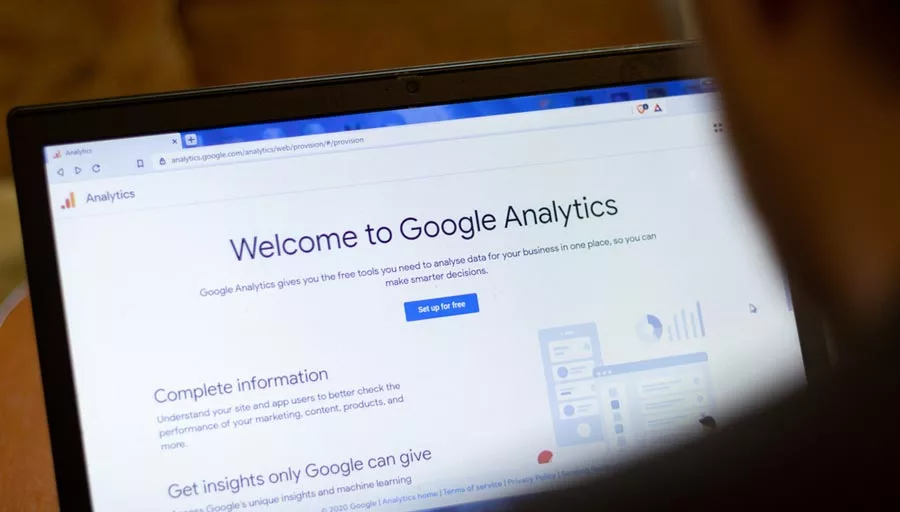Push CRO Efforts to the Limit with Our Guide
When you own a substance abuse treatment center, optimizing your conversion rate is a multi-step plan that includes perfecting every level of your funnel and measuring your KPIs correctly, allowing you to go back and make the proper changes for success.
The value of a conversion related to behavioral healthcare facilities is very high relative to other industries, and each conversion matters a great deal. Your conversion rate optimization checklist should be a final “once-over” of your campaign before it goes live.
In this article, we’ll go over the best way to create a conversion rate optimization checklist for your substance abuse treatment facility, ensuring you’re making the most of your leads.
Why Conversion Rate Optimization Matters for Substance Abuse Treatment Center
Why is Conversion Rate Optimization important for any substance abuse treatment center? Firstly, good Conversion Rate Optimization (CRO) practices ensure that your marketing efforts are not wasted. It’s one thing to attract potential clients to your website or campaign, but it’s another to convince them to take the desired action, such as making an inquiry or booking a consultation.
This is particularly crucial for substance abuse treatment centers where the decision to seek help is often difficult and requires high trust and assurance. Secondly, improving your conversion rate optimization means that you can get more returns from the same amount of traffic. This efficiency saves marketing costs and allows for more targeted and personalized approaches to reach potential clients.
Lastly, conversion optimization rates can provide valuable insights about what works and what doesn’t in your marketing strategy. By continually refining and improving your approach based on these insights, substance abuse treatment centers can significantly improve their client engagement rates and overall success rates.
Understanding Your Target Audience and Conversion Optimization Strategy

Understanding your target audience and customer journey is the cornerstone of any successful marketing strategy. It involves determining who exactly needs your services and how you can effectively reach them – in other words, identifying your ideal client and mapping out the customer journey.
In the context of alcohol and drug rehab marketing, your primary audience typically includes individuals struggling with addiction, their families, and health professionals. But each has a different customer journey on the way to a conversion.
Although the client is the final target, the route can be quite different depending on who you’re snagging at the top of the funnel.
Encouraging a Holistic View of Your Target Audiences
You’ll find there are different ways to encourage users to interact with your brand and specific content you can publish to enhance your conversion rate based on who is interacting with your campaign/site, etc. These can be future clients funneled through an ad campaign, site visitors, and other potential customers.
In many cases, setting up a PPC campaign that directs traffic into your funnel can be an excellent way to understand and target your audience and increase conversions in the most targeted way. In addition, social media can play a huge role in this as well. Setting up groups and engaging with your audience gives you invaluable insight into how your audience behaves and what types of content trigger them to take action.
After deciding on your target client and mapping their journey, give yourself a ballpark number for your conversion rate and what you’d like your ROI to look like.
5 Ways of Creating a User-Friendly Website
Creating a user-friendly website for potential clients is essential in today’s digital landscape. Here’s how you can do it:
1) Keep It Simple
Busy, complicated websites can be hard to navigate. Keep your web design simple and intuitive to ensure a seamless user experience. Plus, this slogan should be an easy one to remember, as it frequently features in AA and other forms of Anonymous support groups.
2) Make It Fast
Speed is critical when it comes to websites. A slow site will frustrate your potential clients and could lead to them leaving your site.
3) Ensure It’s Mobile-Friendly
More and more, people are using their mobile devices to browse the web. Make sure your website is mobile-friendly to cater to these users.
4) Use Clear Call to Action Wording
Your website should guide users toward a desired action. Clear and compelling calls to action can help achieve this.
5) Commit to Testing and Continuous Improvements
Finally, don’t forget to test your website and make improvements based on what you find. This is an ongoing process that should continue even after your site is live.
How Do I Maximize My Website Speed?

Speed is the name of the game in the digital world. In an era where people’s patience levels are dropping, the loading time of your website can significantly impact your conversion rates. Here’s how you can maximize your website speed: Firstly, optimize your images. Large, unoptimized images can slow down your website.
Use tools like TinyPNG or Compressor.io to reduce the size of your images without losing quality. Secondly, enable browser caching. When someone visits your site, the elements of the page they’re visiting are stored on their hard drive in a cache or temporary storage.
The Ongoing Importance of Core Web Vitals
This means that the next time they visit your site, their browser can load the page without having to send another HTTP request to the server. Thirdly, reduce the use of plugins. While plugins can add functionality to your site, they can also slow it down. Regularly audit your plugins and remove any that are not absolutely necessary.
Finally, use a Content Delivery Network (CDN). A CDN can distribute the load of delivering content. Essentially, copies of your site are stored at multiple geographically diverse data centers so that users have faster and more reliable access to your site. This can be extremely important if you’re targeting out-of-state clients.
Developing High-Quality Content That Converts
Quality content creation is at the heart of any successful conversion rate optimization strategy. When it comes to substance abuse treatment centers, your content should aim to address the concerns, fears, and questions that potential clients might have.
It’s all about providing compelling, useful information that encourages prospective clients to take the next step.
4 Ways of Leveraging Social Media Platforms

As a substance abuse treatment center, hyperlocal social media campaigns can be a powerful tool in your conversion rate optimization strategy.
With the right approach, you can reach more potential clients, increase engagement, and drive more conversions. Here’s how:
1. Know Your Social Media Audience
First and foremost, it’s crucial to understand who your audience is. This includes their demographics, interests, and what social media platforms they use.
Tailoring your social media content to fit the needs and interests of your audience can lead to higher engagement and, subsequently, higher conversion rates. This might be different from the demographic you selected in the above section.
2. Create Engaging Content
Engaging content is key to attracting and retaining your audience’s attention. This could include success stories, educational posts about substance abuse, or posts about your center’s unique approach to treatment.
The goal is to foster a connection with your audience, encouraging them to reach out for help.
3. Use Calls-to-Action Based on Appropriate Platform
Every post should include a clear, compelling call to action (CTA). CTAs direct users to take a desired action, such as visiting your website or contacting your center.
Make sure your CTAs are concise, direct, and easy to follow.
4. Monitor and Adjust
Finally, continually monitor your social media metrics to see what’s working and what isn’t. Use this data to adjust your strategy as needed, aiming to improve engagement and conversion rates over time.
Implementing Effective Call-to-Actions For a Higher Conversion Rate
Implementing effective call-to-actions (CTAs) is a crucial part of Conversion Rate Optimization (CRO). It’s like the final nudge giving your potential clients the confidence to take the next step.
Whether that’s reaching out for more information, booking a consultation, or signing up for a program, your CTAs guide the way.
On social media, CTAs can be slightly different. Consider these tips:
- Clear and concise: Keep your CTAs simple and easy to understand. “Contact Us”, “Book Your Consultation”, and “Start Your Journey” are all effective because they’re straightforward and actionable.
- Strategic placement: Place your CTAs where they make the most sense contextually. In a blog post, that might be after discussing the benefits of your treatment programs. On a services page, it might be after listing what you offer.
- Stand out: Use design elements to make your CTAs pop. This could include using a contrasting color, a larger font, or a button format.
It’s much easier to lead clients to your landing pages when you have impactful calls to action.
Utilizing Landing Pages

When it comes to conversion rate tracking and optimization, landing pages play an instrumental role. These pages often serve as the first touchpoint for potential rehab clients.
By adhering to certain strategies, you can make these pages more effective at turning visitors into leads.
Focus on the Value Proposition
It is essential to articulate the value of your treatment center clearly and compellingly on your landing pages. Use compelling headings and concise, potent content to communicate what sets your center apart.
This will increase the chances of capturing the interest of potential clients.
Keep the Design Clean and User-Friendly
Overly cluttered landing pages can confuse visitors and reduce conversions. Keep the design simple and intuitive, ensuring that key information and call-to-action buttons are easily accessible.
Implement A/B Testing
Employ A/B testing to identify the most effective design and content elements to optimize your conversion rates.
By testing different layouts, headlines, or calls to action, you can discover what resonates most with your audience and apply these insights to improve your landing pages.
Use Social Proof
Social proofs such as testimonials or case studies, can significantly boost your landing page’s credibility.
This can make potential clients more confident in choosing your treatment center.
5 Ways of Analyzing and Testing Your Strategy
It’s not enough to just set a strategy and hope it works. The real power of conversion rate optimization lies in constant analysis and relentless testing.
Let’s dive into how you can analyze and test your marketing strategies effectively.
1. Analyze Your Current Performance
Start by taking a deep dive into your current metrics. Are people visiting your website? If they are, are they taking the actions you want them to? If not, it’s time to figure out why.
2. Implement A/B Testing
One of the most effective ways to optimize your conversion rate is through A/B testing. This involves testing two versions of a webpage or marketing material to see which performs better.
3. Use Heatmaps
Heatmaps are a powerful tool for understanding how users interact with your website. They show where users click, how far they scroll, and what they ignore – vital information for improving conversion rates.
4. Embrace Multivariate Testing
If you want to test multiple elements on a webpage simultaneously, multivariate testing is your best friend. Think of it as A/B testing on steroids. Just make sure you have enough traffic for valid results.
5. Analyze and Repeat
Finally, analyze the results of your tests and make necessary adjustments. Remember, conversion rate optimization is an ongoing process. Every tweak brings you closer to a more effective marketing strategy.
Armed with these tools and tactics, you’re well on your way to mastering conversion rate optimization for substance abuse treatment centers. Keep testing, keep learning, and keep optimizing.
Measuring Your Success with Google Analytics

Understanding Google Analytics is the key to unlocking your rehab website’s potential. It’s the compass guiding you through the forest of digital marketing, pointing you in the right direction.
Let’s dive into how you can harness its power to optimize your conversion rates.
Setting up Goals: To start, you need to identify what actions you want your website visitors to take. These actions, or ‘goals’, could include making a phone call, filling out a contact form, or downloading a brochure. Once you’ve set these up in Google Analytics, you’ll be able to track how many visitors complete these actions.
Tracking Sources: Next, it’s important to understand where your website traffic comes from. Google Analytics allows you to track sources such as organic search, social media, paid advertising, and referrals. This information can be invaluable in guiding your marketing strategy.
Understanding Behavior Flow: One of the most powerful aspects of Google Analytics is ‘Behaviour Flow’. This feature provides a visualization of the path visitors take through your website, helping you identify where potential clients might be dropping off and where your content is resonating.
Measuring Success: Lastly, you can’t improve what you can’t measure. Google Analytics provides a wealth of data on your audience, their behavior, and how they interact with your website. Use this information to refine your marketing strategy, optimize your content, and ultimately improve your conversion rate.
Additional Points to Boost Your Rates
Testimonials: The Key to Higher Conversion Rates
Testimonials can be a vital part of your conversion rate optimization checklist.
Testimonials work wonders in driving up conversion rates. But how does this happen, and where do they slot in on the checklist? Let’s dig in. Client or customer testimonials play a crucial role in building trust and credibility. When potential clients read about the positive experiences others have had with your treatment center, they’re more likely to trust your services.
This often translates into a higher conversion rate as more visitors are inclined to sign up for your programs. Therefore, make it a priority to collect and display testimonials prominently on your website. It may be on a dedicated “Testimonials” page or integrated within other content.
The key is to make them easy to find and read. Be sure to include testimonials that speak to different aspects of your service to appeal to a wider range of potential clients.
User Generated Content
User-generated content is a powerful strategy to use on social media and even your blog. Allow guest posts from past clients and pin posts that highlight good reviews and other standout elements.
Three Common Mistakes Treatment Centers Make
Substance abuse treatment centers, like any business, are not exempt from committing marketing blunders. These common pitfalls can drastically affect their conversion rates and hinder their mission to aid those in need.
Let’s review some of the most common errors:
Mistake 1: Lack of Audience Understanding
Not understanding your audience is a prevalent mistake that many treatment centers make. They often make assumptions about their clients’ needs instead of conducting thorough research.
Remember, the better you comprehend your audience, the more effective your marketing strategy.
Mistake 2: Inconsistent Branding
A consistent brand is crucial for building trust and credibility. Sadly, many centers have inconsistent branding across their marketing channels. This can confuse potential clients and dilute your brand’s impact.
Mistake 3: Neglecting Digital Marketing Trends
In this digital age, neglecting online marketing is a grave mistake. Many centers are slow to adapt to digital trends, causing them to miss opportunities to increase their conversion rates.
Embrace online marketing – it’s here to stay for the long haul.
Important Statistics On Substance Abuse Treatment Center Conversion Rates

We thought it might be helpful to leave you with some industry statistics to wrap up, giving you a benchmark when you’re going through our checklist.
- The average conversion rate for substance abuse treatment centers is around 10%. If you’re hitting this number, you’re at par for the course.
- The top-performing substance abuse treatment centers have a conversion rate of 20% or higher. If you want to be among some of the highest-performing and highest-grossing treatment centers, you’ll need to shoot for a rate of around 20% or higher (assuming your ROI isn’t too over the top). Remember, a good rate doesn’t always mean good ROI.
- Don’t get too fancy with your CTAs. The most impactful call-to-action out of the hundreds used? “Call Now.”
- The average time spent on a substance abuse treatment center’s website is around 2 minutes. You have 120 seconds to make an impression. This is why things that seem minute can be extremely important in the grand scheme of things.
- The use of video on a substance abuse treatment center’s website can increase conversion rates by up to 80%. Implement this into your content marketing and advertising strategies.
- The use of social proof, such as testimonials, can increase conversion rates by up to 34%. These are all bottom-of-the-funnel techniques that leave a lasting impact on potential and past clients.
- The use of urgency, such as compelling copywriting and statistics that drive the importance of treatment homes, can increase conversion rates by up to 332%.
- The use of chatbots on a substance abuse treatment center’s website can increase conversion rates by up to 45%. Giving a potential client someone to talk to instantly, even if it’s just a chatbot, can be a total game-changer.
- The average cost per lead for substance abuse treatment centers is around $200-$300. Keep this in mind when calculating your ROI.
Ads Up Marketing Can Help with Your Conversion Goals
Conversion rates not as high as you’d like? Do your leads keep getting lost or squandered? Reach out to Ads Up Marketing and we can help you put your marketing goals back in alignment and put your facility back on track.
With decades of experience in addiction treatment marketing, we will assist in capturing conversions that are lost, and let you know the best ways to minimize further lost opportunities and leads.
Let’s set up a free strategy call today so we can get you started ASAP… all consultations are completely confidential, and can provide options and support for your teams to action immediately!
Free Digital Marketing Analysis




